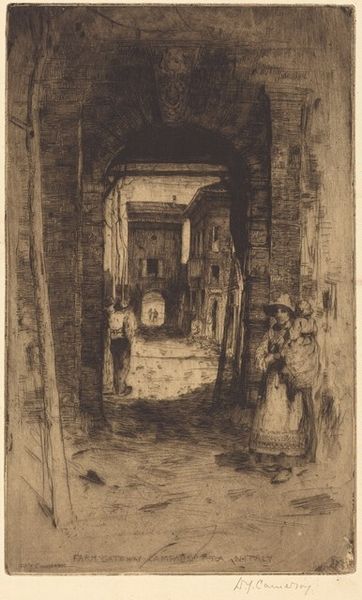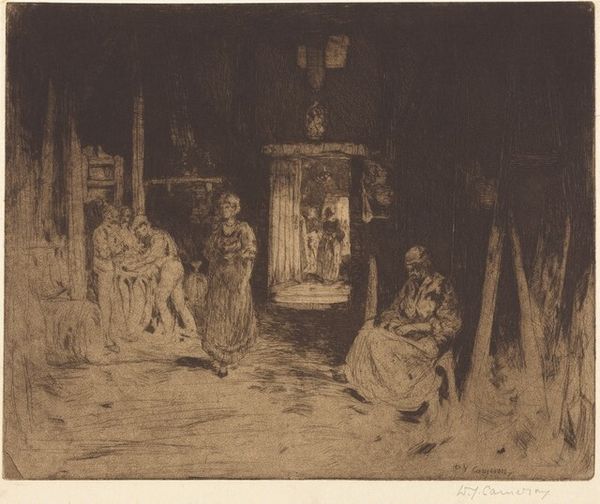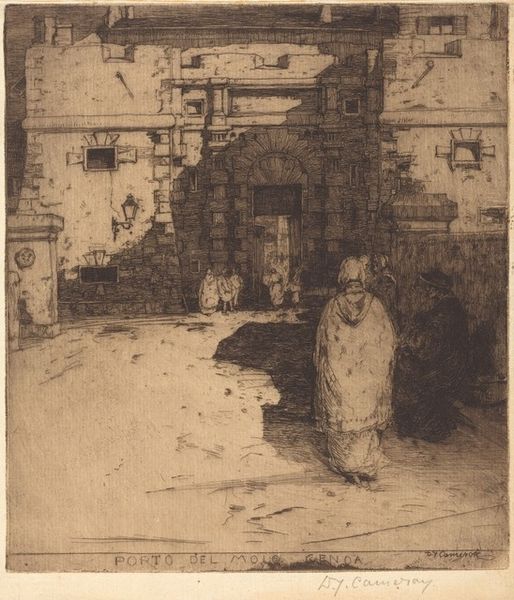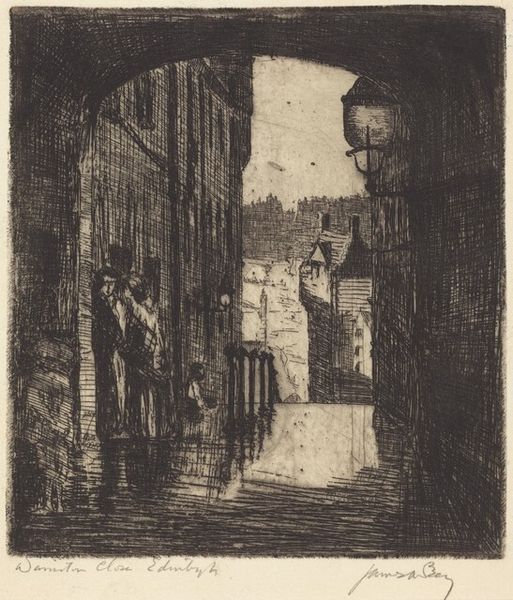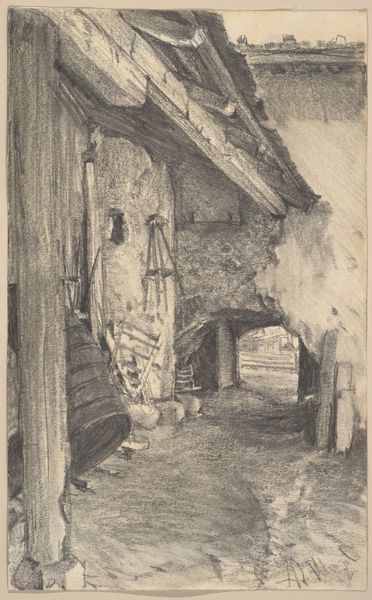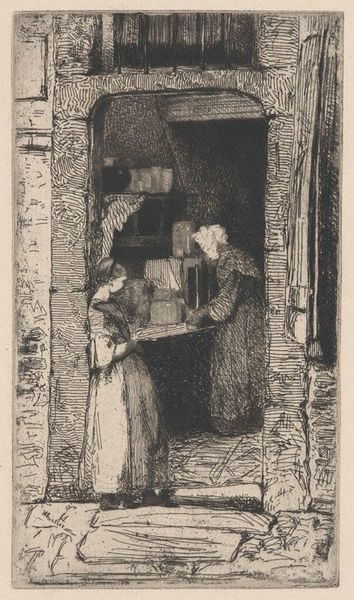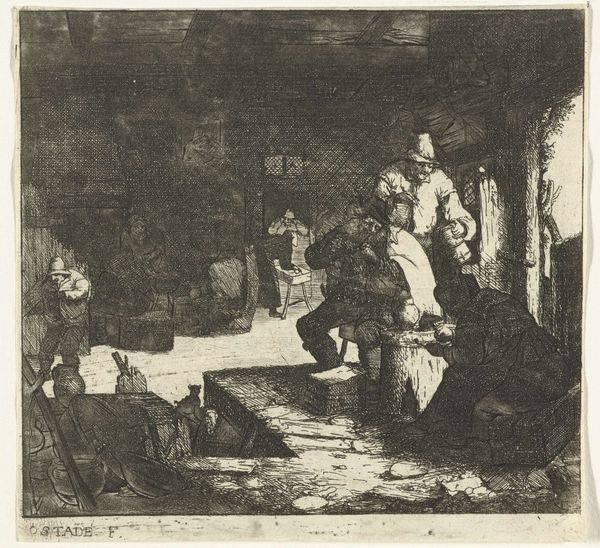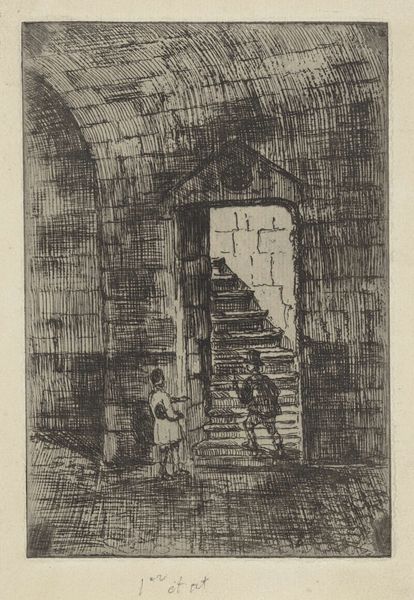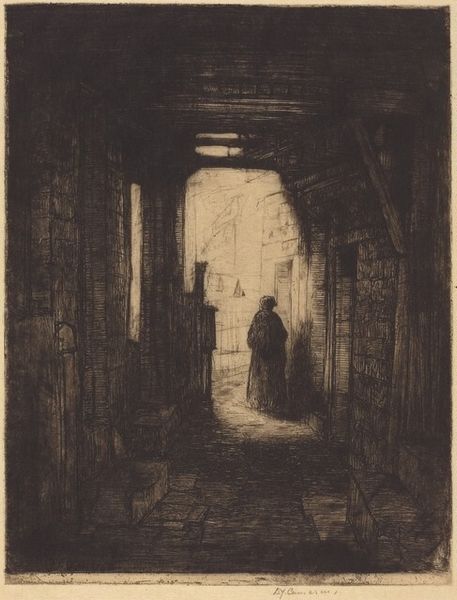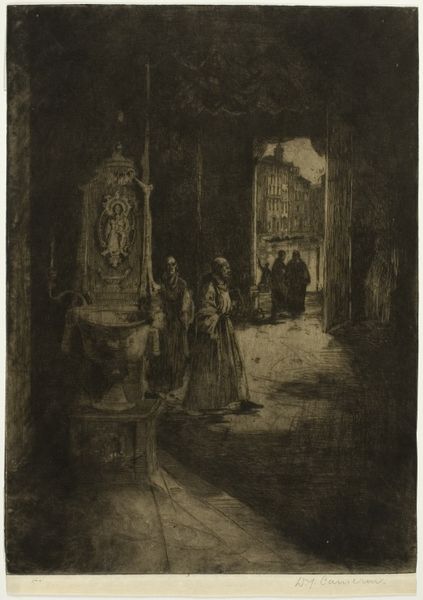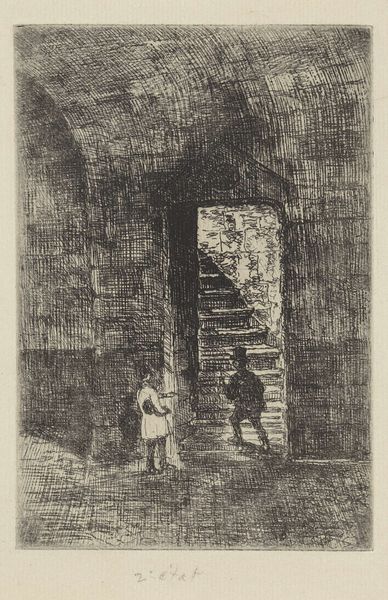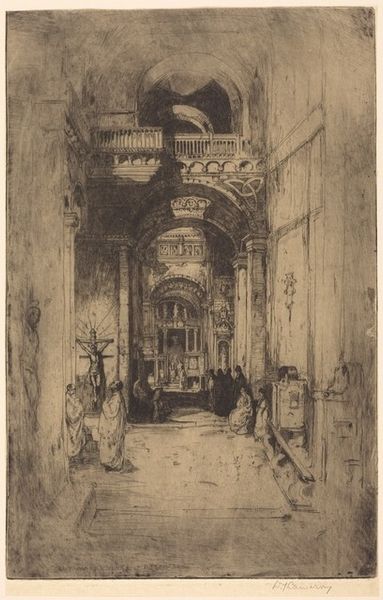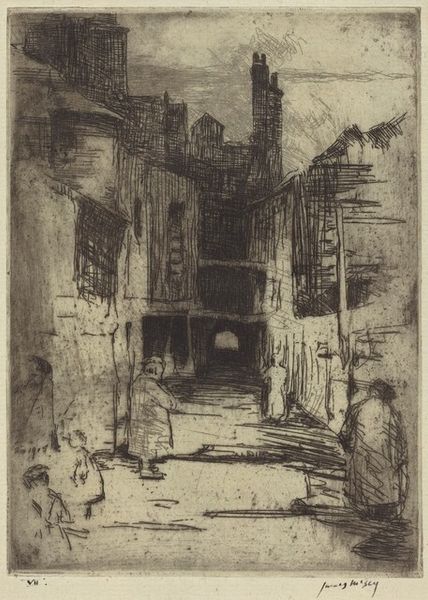
drawing, print, etching
#
drawing
#
16_19th-century
# print
#
impressionism
#
etching
#
figuration
#
cityscape
#
genre-painting
#
realism
Copyright: Public Domain: Artvee
Curator: Welcome. We're standing before "The Beggars," an etching by James Abbott McNeill Whistler, dating from around 1880. Whistler, an American artist living primarily in Britain, was deeply influenced by both realism and impressionism in capturing everyday life. Editor: It has a mysterious and dreamlike mood. A street in shadow, rendered in wispy, broken lines. The figures are kind of ghost-like, clinging to the walls...almost part of them. I’m struck by the contrast of light at the opening of the street and this thick darkness that holds the figures. Curator: That tension between light and shadow, both physically and metaphorically, is key to understanding Whistler. Consider the context: Late 19th-century urban life was undergoing immense social change. Mass migration to cities created overcrowding, poverty and inequality. Whistler was committed to depicting this reality. Editor: You know, those "broken lines" you mentioned earlier aren't just abstract—they describe poverty quite accurately. Ripped shawls and threadbare clothes come to mind. I sense a silent conversation here, not just a representation. It whispers of hardships that words could never catch. The light seems indifferent, doesn't it? Like it belongs to someone else, somewhere else. Curator: It's interesting you mention indifference because some critics accused Whistler of romanticizing poverty for artistic effect, ignoring the systemic issues behind it. But others championed his realistic approach, reminding his upper class British viewers of the humanity of those most affected by their economic prosperity. Editor: Maybe it's both. Maybe it's like… poverty has forced its characters to fade into the environment so that they have taken its properties; their reality becomes one with their surrounding. The realism invites our empathy, but the artist doesn't push a moral agenda, and it stays honest, subtle. Curator: I think that interpretation aligns with Whistler’s own aesthetic philosophies, which were rooted in "art for art's sake." For him, form and emotion superseded didactic political statements, though that wasn't an entirely neutral stance given the world around him. Editor: Right, but ultimately, for me, this etching hits a deeply human place, far from political speeches or academic art debates. Curator: Thank you. It’s the nature of Whistler's art to invite debate, even still. I hope our chat has illuminated the socio-political issues around it. Editor: Thanks. Now that my imagination has been set loose by "The Beggars", who knows what dreams I might conjure up later.
Comments
No comments
Be the first to comment and join the conversation on the ultimate creative platform.
